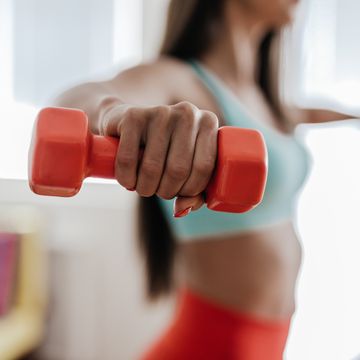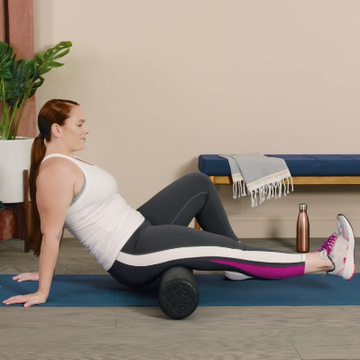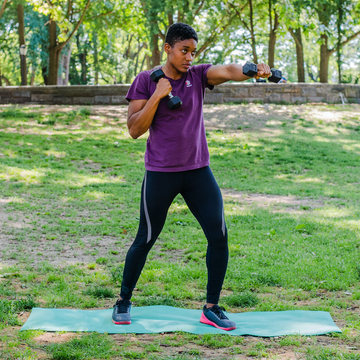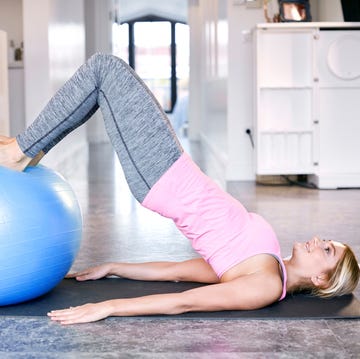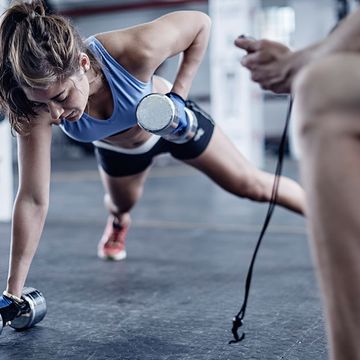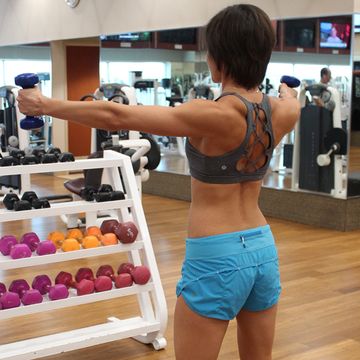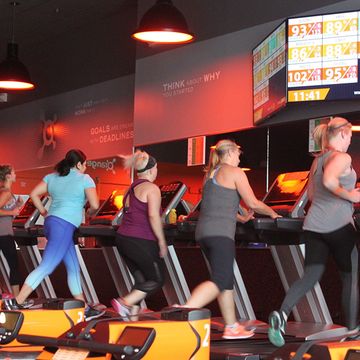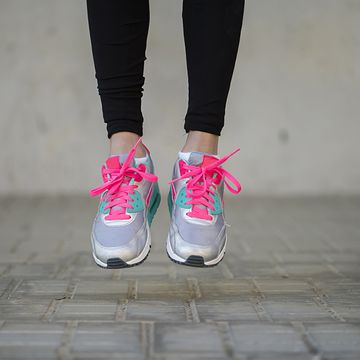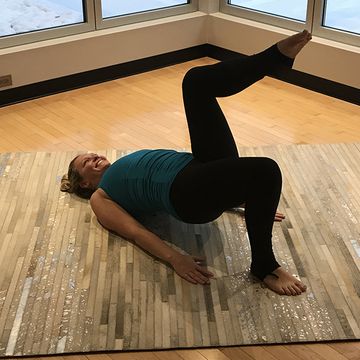Does muscle weigh more than fat? Well, technically no: When it comes down to it, one pound of muscle weighs the same as one pound of fat. What actually sets muscle and fat apart is density. You see, one pound of fat takes up more space than one pound of muscle. And that's why people who start exercising may find they're actually gaining weight while slimming down, at least at first.
That can be frustrating when your ultimate goal is to see the number on the scale get smaller. But “it’s definitely not something to be concerned about,” says Joel Seedman, PhD, owner of Advanced Human Performance and a certified strength and conditioning specialist. “It’s a good sign that you’re doing the right kind of exercises and working out at an intensity that’s going to lead to a difference in your body composition. You’ll eventually see that shift where you gain muscle and lose fat, which speeds up your metabolism and makes you look more trim and toned,” says Seedman.
That initial weight gain is very common, especially among women. “Quite often with my female clients, at first they’ll gain muscle at a faster rate than they lose fat. Their body fat is a bit more stubborn to come off,” says Seedman. Women’s muscle growth usually taper off after the initial gains, Seedman explains, so their weight will even out. On the other hand, men put on muscle more steadily, so they might not notice a spike on the scale at all.
How to increase muscle mass and lose body fat
If you gain weight, remember that you’re likely still looking slimmer. “A lot of people worry that if they gain five pounds of muscle, they’re going to look thick or heavy,” says Seedman. “But because it’s so dense, five pounds of muscle spread over the body doesn’t give a huge size increase. If you lose five pounds of fat and gain five pounds of muscle, you’re losing size,” Seedman explains.
Whether gaining some muscle or frying fat is your goal, strength training is essential—and you should make sure you’re engaging your big muscle groups. “I always recommend choosing exercises that are the most bang for your buck—that use the most muscle tissue and the bigger muscles along with the smaller, accessory muscles,” says Seedman. Some of his favorite strength exercises are rows, presses, lunges, and planks. 90 percent of the strength work you do should be compounds movements like these, he says, as opposed to exercises that hone in on one specific muscle, like biceps curls.
Aim for 30 minutes of strength work three days a week, either on alternating days with cardio or before your cardio workout. “The general rule is you don’t want to do cardio right before strength training because it’ll zap your energy and then your strength training suffers,” says Seedman.
Work your triceps with these at-home exercises:
How to measure body fat
Whatever the number on the scale, the best way to make sure your workouts are doing their job is to measure your body fat. There are several techniques on how to do this. A traditional skin-fold caliper test—where a trainer or kinesiologist pinches your skin with a plastic or metal gadget—is one of best methods. Body fat is often calculated by taking measurements with the caliper at three different sites on your body. For women, it's on the triceps, suprailiac (the area right below your armpit at the top of your hip bone), and thigh. For men, it's the chest, abdominals, and thigh.
But Seedman believes that taking a reading from seven different sites is more accurate. “A three-site test isn’t as accurate because everyone stores fat differently,” says Seedman. “Usually there are one or two areas where people hold the most fat.” If one of those areas for you is on the three-site test, your number might seem higher than it actually is.
Another bonus of the seven-site skinfold test: “It can also tell you a bit about your hormones and endocrinology," says Seedman. For instance, if you tend to hold fat mostly in your lower abdomen, it suggests that your cortisol levels might be up. If triceps are your main fatty area, it could be a sign of a testosterone-estrogen imbalance.
How to calculate your ideal weight and body fat percentage
Although there aren't any official guidelines for body fat percentage loss, most experts agree that one percent loss every month is safe and doable, according to the American Council on Exercise (ACE). If you'd like to calculate approximately how much weight you'll need to lose to achieve your ideal body fat percentage, you can follow this ACE formula: Desired body weight = Lean body weight/(1-desired body fat percentage). Your lean body weight is how many pounds of lean mass you have based on your body fat test, and your desired body fat percentage is your goal body fat in decimal form.
For example, if you weigh 125 pounds and have 25 percent body fat (31.25 pounds fat, 93.75 pounds lean) and your goal is to weigh 100 pounds and have a body fat percentage of 20 percent. You would use this formula:
93.75/(1-.20)= 117.18 pounds
So you would need to lose 8 pounds to reach your goal of weighing 100 pounds. (125-117.18)
These are the general body fat percentage categories for women, according to ACE:
- Essential fat - 10-13%
- Athletes - 14-20 %
- Fitness - 21-24%
- Average - 25-31%
- Obese - 32% and higher
If you're keeping up with your workouts, your body fat measurements will drop. At the end of the day, it's the quality of the pound that matters. Muscle is leaner than fat, leading you to drop pant and dress sizes. This is just another example of why you shouldn't focus on the number on the scale when you're trying to lose weight.



